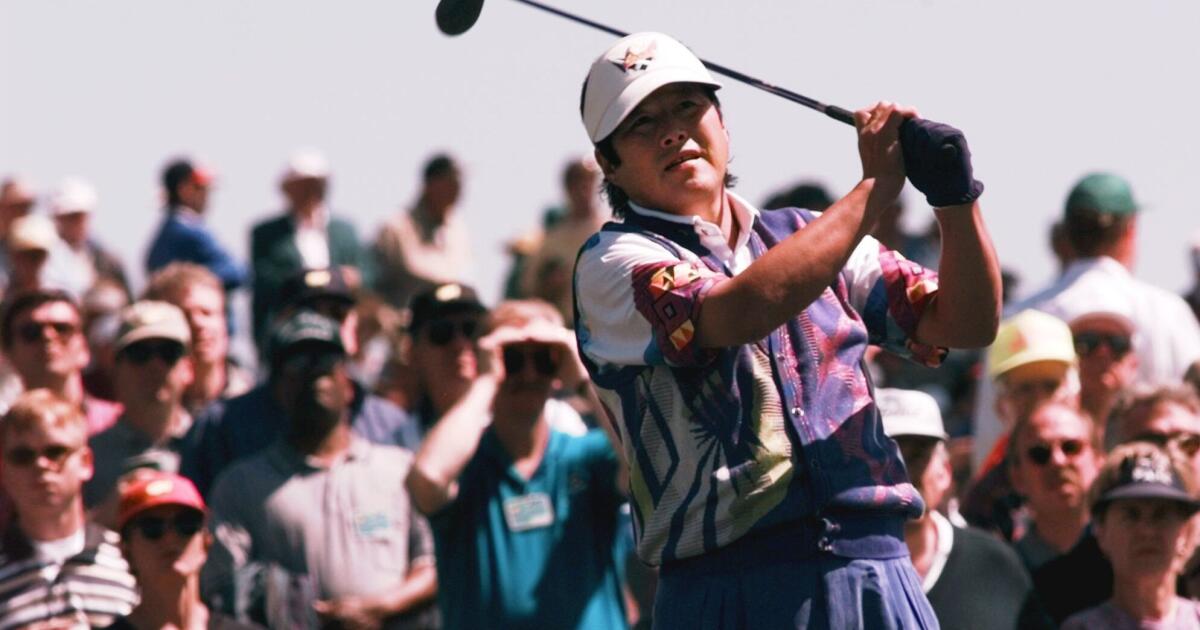Jumbo Ozaki, who had most wins of any Japanese golfer, dies at age 78
Masashi “Jumbo” Ozaki, whose 113 worldwide victories were the most of any player from Japan, died Wednesday in his home country after a battle with colon cancer, the Japan Golf Tour said. He was 78.
Ozaki was revered in Japan, a big hitter with a sense of style who won 94 times over 29 years on the Japan Golf Tour, the last one coming at the 2002 ANA Open when he was 55.
He rose to No. 5 in the world ranking in 1996 at age 49. Ozaki often got overlooked for never winning outside Japan except for the New Zealand PGA Championship. He was inducted into the World Golf Hall of Fame in 2011.
“He is an indispensable, one-of-a-kind figure in discussing men’s golf, both now and in the future,” the tour said in a social media post.
Ozaki competed in 49 majors, his best finish coming in the 1989 U.S. Open at Oak Hill when he finished three shots behind Curtis Strange. He played the Masters for the 19th and final time in 2000 when he was 53 and tied for 28th.
Isao Aoki was the first Japanese player in the World Golf Hall of Fame, and Hideki Matsuyama became the first to win a major at the 2021 Masters. Both were inspired in some fashion by Ozaki, the pioneer in a nation now obsessed with golf.
Ozaki won the Japan Open five times and the Japan PGA Championship six times. He led the Japan Golf Tour money list a record 12 times, including five in a row from 1994 through 1998. He won his final money title in 2002, when he was 55.
When he was inducted into the Hall of Fame, Ozaki said his one regret was not playing more outside of Japan.
“But I dedicated my life to Japanese golf and am extremely grateful the voters thought I was worthy of this honor,” he said upon his election. He received 50% of the vote on the International ballot.
Ozaki was looked upon as the Arnold Palmer of golf in Japan with his powerful swing, charisma and sense of style, often wearing silk shirts and baggy pants. And his skill was not limited to just golf. He played the guitar and had three songs reach the pop charts in Japan, according to the Hall of Fame.
His first love was baseball, and he spent three years pitching professionally before turning to golf. That was evident when Ryo Ishikawa, who won his first Japan Golf Tour title at age 15, spoke of Ozaki’s influence. Ishikawa said he would visit Ozaki about 10 times a year to get advice.
“Jumbo used to be a baseball player, so he always tried to teach me the link from pitching or hitting to golf,” Ishikawa said in 2010 interview with the Associated Press. “Jumbo wanted me to hit the ball far.”
Ozaki traveled with an entourage when he did play outside Japan in the majors, usually renting a house and bringing a sushi chef so his people would feel at home.
He has two younger brothers who also played on tour, Naomichi (Joe) and Tateo (Jet).
Ozaki played in the 1996 Presidents Cup, partnering with Vijay Singh to beat the American duo of Fred Couples and Davis Love III. He qualified for the 1998 team but decided against the trip to Australia, and his brother, Joe, played instead.
Ferguson writes for the Associated Press.
